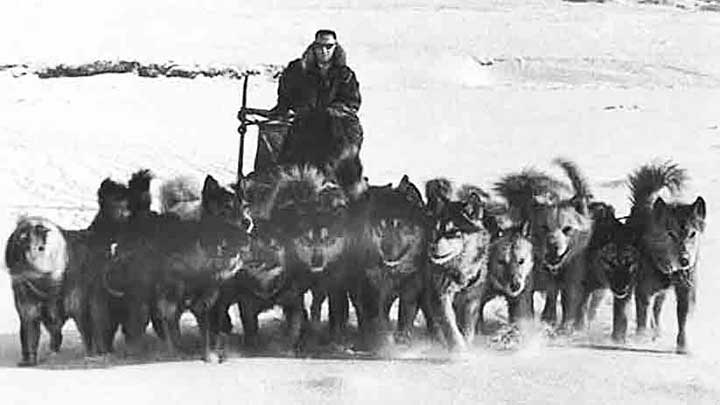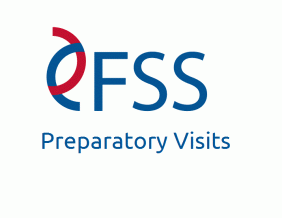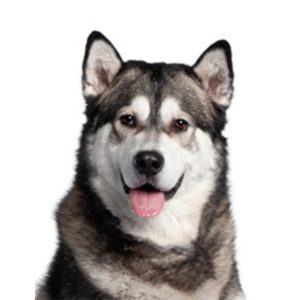Dog power has been used for hunting and travel for over a thousand years. As far back as the 10th century BCE, these dogs have contributed to human culture.
Assembling a dog sled team involves picking leader dogs, point dogs, swing dogs, and wheel dogs. The lead dog is crucial, so mushers take particular care of these dogs. Another important detail is to have powerful wheel dogs to pull the sled out from the snow. Point dogs (optional) are located behind the leader dogs, swing dogs between the point and wheel dogs, and team dogs are all other dogs in between the wheel and swing dogs and are selected for their endurance, strength, and speed as part of the team. In dog sledding, Siberian Huskies or Alaskan Malamutes are the main types of dogs that are used for recreational sledding because of their strength and speed and endurance as well as their ability to withstand the cold. However, Alaskan Huskies (a mix between Siberian Huskies and Alaskan Malamutes) are also a popular dog for sled dog racing, because of their endurance, good eating habits, speed, and dedication to running even when tired.
Dog Sliding
History
The first Arctic explorers were men with sled dogs. Due to the success of using sled dogs in the Arctic, it was thought they would be helpful in the Antarctic exploration as well, and many explorers made attempts to use them. Sled dogs were used until 1992 when they were banned from Antarctica by the Protocol on Environmental Protection to the Antarctic Treaty.
The most commonly used dog in dog sled racing, the Alaskan Husky is a mongrel bred specifically for its performance as a sled dog. They first came into existence in the late 1800s. Occasionally, Alaskan Huskies are referred to as Indian Dogs, because the best ones supposedly come from Native American villages in the Alaskan and Canadian interiors. They weigh between 18 and 34 kilograms (40 and 75 lb) and may have dense or sleek fur. Alaskan Huskies bear little resemblance to the typical husky breeds they originated from, or to each other.
There are two genetically distinct varieties of Alaskan Husky: a sprinting group and a long-distance group. Alaskan Malamutes and Siberian Huskies contributed the most genetically to the long-distance group, while Pointers and Salukis contributed the most to the sprinting group. Anatolian Shepherd Dogs contributed a strong work ethic to both varieties. There are many Alaskan Huskies that are partially Greyhound, which improves their speed. Although some Alaskan Huskies are known to be part wolf, which increases their endurance, these wolfdogs are generally disliked since they have a reputation of being difficult to control.

Rules
For Rookie Mushers Planning to Run the 2019 (or later) Iditarod Trail Sled Dog Race
If you are a rookie musher planning on entering a future Iditarod, you must get a report card from your qualifying races completed by race officials and returned to the Iditarod office within 10 days of the end of the qualifying race. It is YOUR responsibility to advise officials prior to the start of the race that you are using that race for a qualifier and will need the report card completed and to provide officials with the correct form, which you will find on the website along with the other paperwork. That way, officials will know ahead of time to watch you so they can complete the report card. You should do that if there is any slight thought in your head about one day running the Iditarod. There is no time frame on completing qualifiers.

Equipments
- The quintessential piece of dog sledding equipment, besides the dogs, of course, is the dog sled. Today there are many different styles of dog sleds built out of different types of material. Sleds are built differently depending on the use. Sleds with larger beds are generally “expedition” style sleds designed for mid and long distance races and the training that they involve. The bigger beds allow mushers to carry the necessary gear needed for spending time on the trail. Sleds for sprint racing are generally much smaller and nimbler.Sleds are commonly made out of wood, carbon fiber, and aircraft aluminum. Materials need be both tough and lightweight – we don’t want our dogs pulling weight they don’t need to be!
Brushbow
The brushbow is like the front bumper of the sled.
Bed
The bed is the flat part of the sled that is used for storage and hauling gear. Generally, sleds used for long distance mushing will have a longer bed than those used for sprint racing.
Runners
The runners are what the sled sits on.
Brake
The brake is used to stop the team. There are several different styles of brakes made by various companies. We’ve found that the best brake we’ve ever used.
Dragmat
The dragmat is the speed control of the team.
Association



